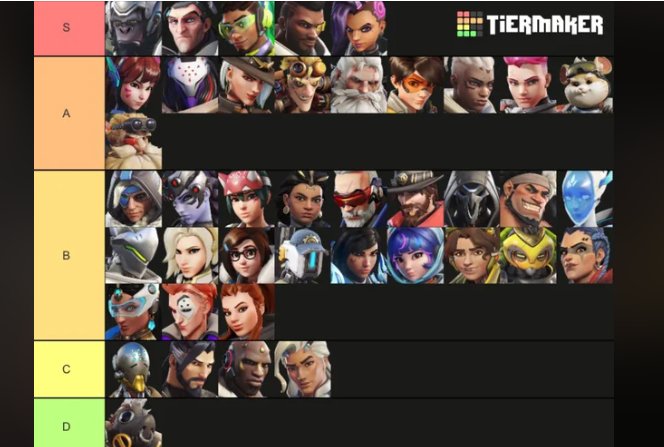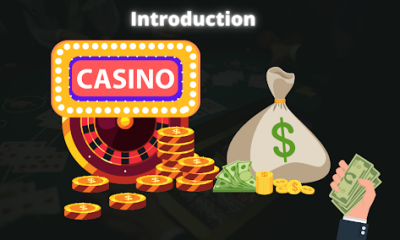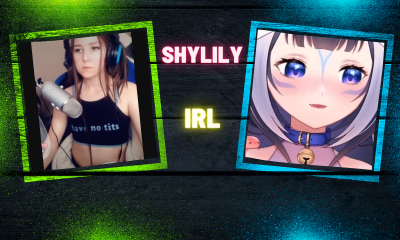Gaming
Overwatch Tier List: The Ultimate Hero Ranking Guide for 2025

Overwatch has remained a powerhouse in the team-based shooter genre since its initial release. With a diverse roster of heroes, each bringing unique playstyles and abilities to the table, understanding the current meta can make a major difference in gameplay. Whether you’re diving into competitive matchmaking or simply looking to climb the ranks, knowing which heroes dominate and which ones lag behind is essential.
This tier list breaks down Overwatch heroes based on their performance in Season 11 of Overwatch 2, factoring in balance changes, map rotations, and prevailing strategies at higher ranks.
S-Tier: The Elite of the Elite
These heroes currently define the meta. They dominate most matchups and often feel irreplaceable in their roles. If you want to gain a competitive edge, these are the picks to master.
Sojourn (Damage)
Sojourn continues to shine with her high burst potential and exceptional mobility. Her railgun can decimate squishies in one charged shot, and her slide allows her to reposition quickly, making her elusive and lethal. With precision aim, she becomes a true menace on the battlefield.
Sigma (Tank)
Sigma’s ability to control space with his barriers and Accretion stun keeps him in the top echelon. His toolkit offers a rare mix of defensive versatility and offensive pressure. In coordinated team play, Sigma can dictate the flow of engagements.
Ana (Support)
Ana’s toolkit offers everything a support player could want: healing, damage, crowd control, and one of the best ultimates in the game. Her Biotic Grenade can swing fights, and skilled players can shut down enemy tanks with her Sleep Dart. Ana remains a must-pick at all skill levels.
A-Tier: Powerful and Reliable
While not quite as dominant as S-Tier heroes, these picks are strong across most situations. In the right hands, they can go toe-to-toe with top-tier characters.
Cassidy (Damage)
Cassidy’s consistent mid-range damage output and Magnetic Grenade make him a threat to mobile targets like Tracer and Genji. He’s not as mobile as other DPS, but his ability to hold angles and punish flankers makes him a staple pick for structured play.
Reinhardt (Tank)
Reinhardt thrives in brawl-centric compositions. With the recent buffs to his Fire Strike and charge control, he feels more fluid than ever. His presence in close-quarters maps remains unmatched, and his Earthshatter can flip entire team fights.
Baptiste (Support)
Baptiste offers high healing output, vertical mobility, and one of the strongest utility abilities in Immortality Field. His synergy with bunker and poke compositions makes him a top-tier pick when sustainability is key.
B-Tier: Solid Choices with Caveats
These heroes can be effective but often depend on map choice, team composition, or specific counters being absent.
Soldier: 76 (Damage)
Soldier is a great all-around DPS with self-sustain and consistent damage. While he doesn’t have the raw burst of Sojourn or Echo, his ability to apply pressure and survive skirmishes makes him a decent choice for players who prefer traditional FPS mechanics.
Winston (Tank)
Winston excels at diving into the enemy backline, disrupting supports, and peeling for teammates. However, he struggles against high burst compositions and requires strong team coordination to shine.
Zenyatta (Support)
Zenyatta’s Orb of Discord remains one of the most potent damage amplifiers in the game. However, his lack of mobility and low survivability make him a risky pick without proper protection. His impact scales significantly with aim and positioning skills.
C-Tier: Niche and Situational Picks
These heroes have their moments but often struggle in the current meta due to counters, map dependence, or limited synergy.
Junkrat (Damage)
Junkrat can wreak havoc in tight corridors and narrow chokepoints, but his effectiveness drops on open maps. His unpredictable playstyle can catch some enemies off guard, yet he’s often too easy to counter at higher levels.
Roadhog (Tank)
Roadhog’s solo pick potential is still notable, especially with his hook combo. However, the current team-focused meta doesn’t favor him. Without a shield or strong peel mechanics, he’s frequently outclassed by other tanks.
Brigitte (Support)
Once a dominant support, Brigitte now sits in a more specialized role. While her armor packs and stun combo are useful against certain dive comps, she lacks the burst healing and utility of her support peers in most situations.
D-Tier: Struggling in the Meta
Heroes in this category face significant challenges. Whether due to nerfs, meta shifts, or inherent design issues, they generally underperform and require exceptional skill or favorable circumstances to be viable.
Bastion (Damage)
Despite reworks aimed at increasing his mobility, Bastion still struggles due to his predictability and vulnerability. His turret mode offers immense damage, but it’s often more of a liability than an advantage without heavy protection.
Doomfist (Tank)
Once a feared damage-dealer, Doomfist’s transition to the tank role hasn’t fully landed. He lacks the durability and crowd control necessary to thrive in the front line, and his kit feels mismatched with the pace of current team fights.
Lifeweaver (Support)
While Lifeweaver introduces new mechanics like repositioning teammates, his healing output and survivability are lacking. His Learning curve is steep, and most players can’t extract consistent value from his abilities in fast-paced matches.
Meta Shifts and Hero Synergy
The Overwatch meta is constantly evolving. Hero effectiveness often fluctuates based on patch notes, community experimentation, and professional play. Additionally, certain heroes perform significantly better when paired with specific teammates.
For example:
-
Orisa becomes far more impactful when supported by Kiriko, whose cleansing ability can nullify crowd control aimed at the frontline.
-
Echo paired with a pocket Mercy remains a dangerous combo capable of deleting targets before they can react.
-
Dive compositions (like Winston, Genji, and Lucio) can still succeed, but require tight coordination and map knowledge.
Understanding synergy is just as important as raw tier rankings. Many lower-tier heroes can outperform expectations when placed in the right context.
Map Considerations
Hero strength can vary significantly depending on the map pool. For instance:
-
Pharah excels on vertical maps like Lijiang Garden or Ilios.
-
Mei becomes a powerful control specialist on tight-point maps such as King’s Row or Eichenwalde.
-
Widowmaker dominates open sightlines on maps like Circuit Royal, where long-range pressure can decide fights early.
Choosing your hero to fit the map and enemy composition can turn the tide of battle even if the hero isn’t strictly “meta.”
Climbing the Ranks: Picking Smart
When trying to improve your rank, it’s often better to focus on a smaller hero pool and truly master their mechanics and matchups. While it’s tempting to always chase the meta, you’ll gain more value through deep game knowledge and muscle memory with a few heroes rather than constantly switching.
That said, it helps to have one pick from each role that’s relatively flexible:
-
Damage: Sojourn or Cassidy
-
Tank: Reinhardt or Sigma
-
Support: Ana or Baptiste
These heroes have broad applications and can be adapted to different compositions without being completely dependent on teammates or specific strategies.
The X-Factor: Player Skill and Teamwork
No tier list can account for raw mechanical skill and decision-making. A top-tier Genji player can absolutely outperform a mediocre Sojourn. Tier lists should be viewed as guides—not gospel. In Overwatch, your ability to communicate, position wisely, and make clutch plays often outweighs strict hero rankings.
Additionally, Overwatch is a team game. Even the strongest hero will struggle without backup. Learning how to synergize with your teammates and make coordinated plays will take your impact far beyond what a tier label can predict.
Final Thoughts
The Overwatch tier list is a dynamic landscape, shifting with every patch, meta innovation, and balance change. While it’s helpful to know who the top picks are, the most important thing is to play heroes you enjoy and can perform well with. A comfortable and confident player will always outshine someone struggling to adapt to a hero just because they’re “S-tier.”
Whether you’re grinding competitive or playing with friends, understanding the meta gives you a valuable edge—but never forget that flexibility, adaptability, and game sense are what truly make a great Overwatch player.













